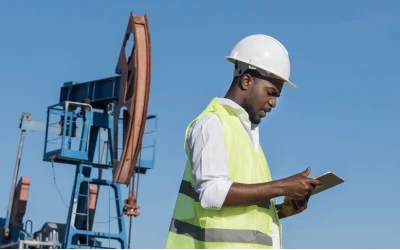What Does the Future Hold for Seismic Technology?
Oil & Gas
Last week Aberdeen hosted Seismic 2018, a conference for the major players in the field of seismic technology. Although a rather niche aspect of the Oil & Gas industry, the conference was sold out and saw some exciting developments from the operators, contractors and consultancies exhibiting at the event.
What is Seismic Technology?
Seismic technology is used to search for oil and natural gas below the Earth’s surface, using the same type of waves of energy that are used to study earthquakes. To search for oil and gas, seismic waves are sent into the earth, bounce back and reach sensors called geophones that pick up the reflections. This data can then give a representation of what lies beneath the Earth’s surface and suggest where to drill for oil or gas.
What happened at the conference?
The conference exhibitors were made up of a variety of stakeholders in the seismic industry, including the UK Oil & Gas Authority who sponsored the event and provided the keynote presentation. The government agency provided a stark reflection on the lack of seismic activity taking place in the UK North Sea and called upon the operators to do more.
Many operators were sharing interesting case studies from their recent projects or displaying new technologies they have to offer. The Norwegian company PGS discussed their new source technologies in development to reduce the impact of seismic surveys on the marine environment, in a push to make oil and gas a more eco-friendly endeavour. Gardline, who are a key industry employer in East Anglia, were exhibiting their HR3D surveys which offer vast improvements upon 2D methods which are still the industry norm.
The utilisation of HR3D seismic provides an increased confidence in the detection of shallow gas, providing greater risk mitigation benefits as well as potentially significant financial advantages to the operator. Misinterpretation of geohazards data can be costly, either by shallow gas anomalies being missed, or by spurious anomalies being interpreted using traditional 2D techniques. These have the potential for large cost implications along the project timeline where costs are considerably higher than at the site investigation stage of a project. Logistically having a HR3D dataset covering an area of planned field development also enables a more informed approach to well planning. Giving greater confidence to the choice of location and avoiding the great costs involved in relocating a well.
Energy production is a challenging and exciting field to be involved in. At People with Energy, we specialise in placing candidates with the companies that can offer them the best opportunities. We want to hear from qualified engineers with experience in the oil and renewables industries, send us your CV today.
Keep up with our latest jobs by following us on Facebook and Twitter.
Main image courtesy of PGS.




